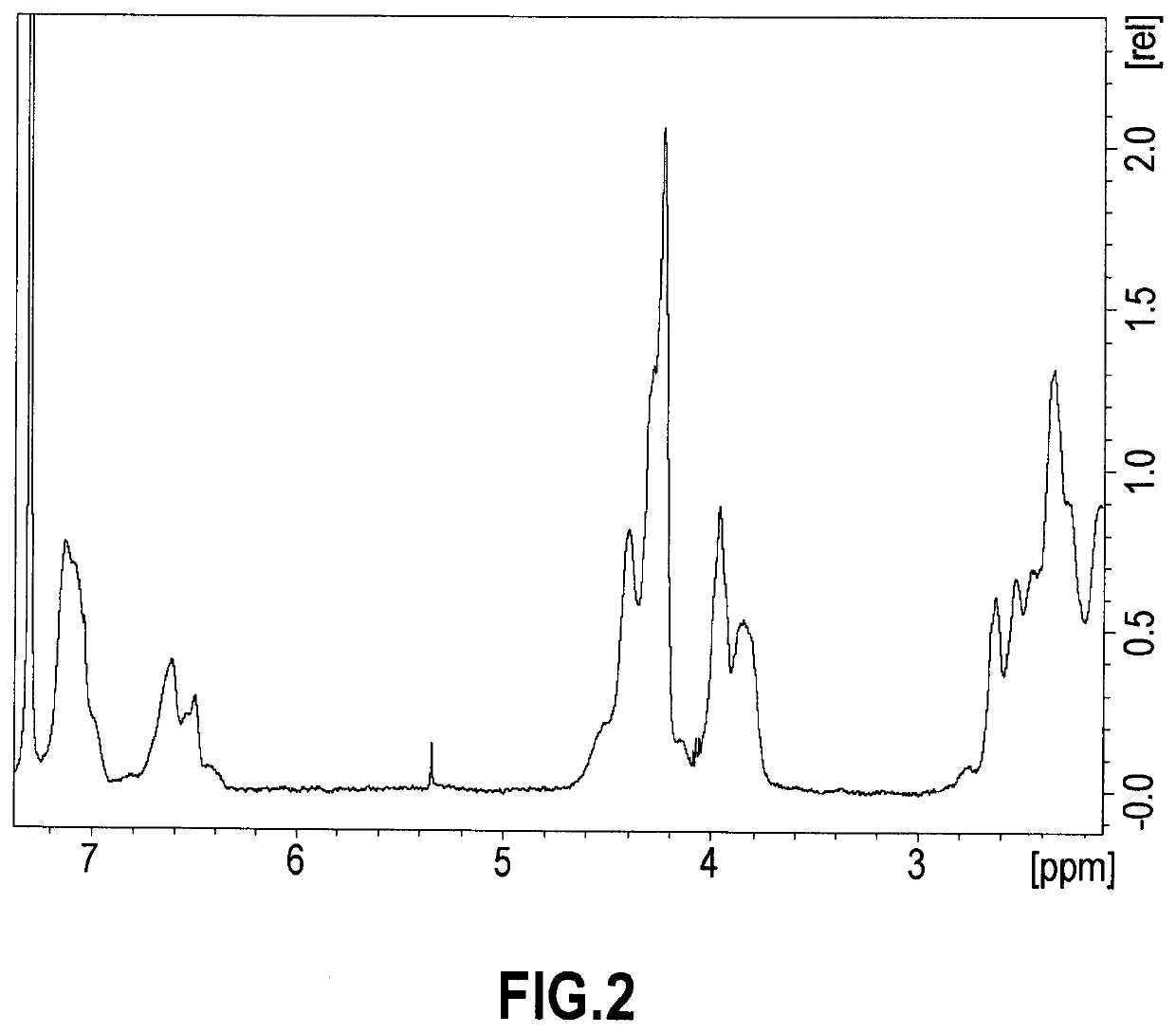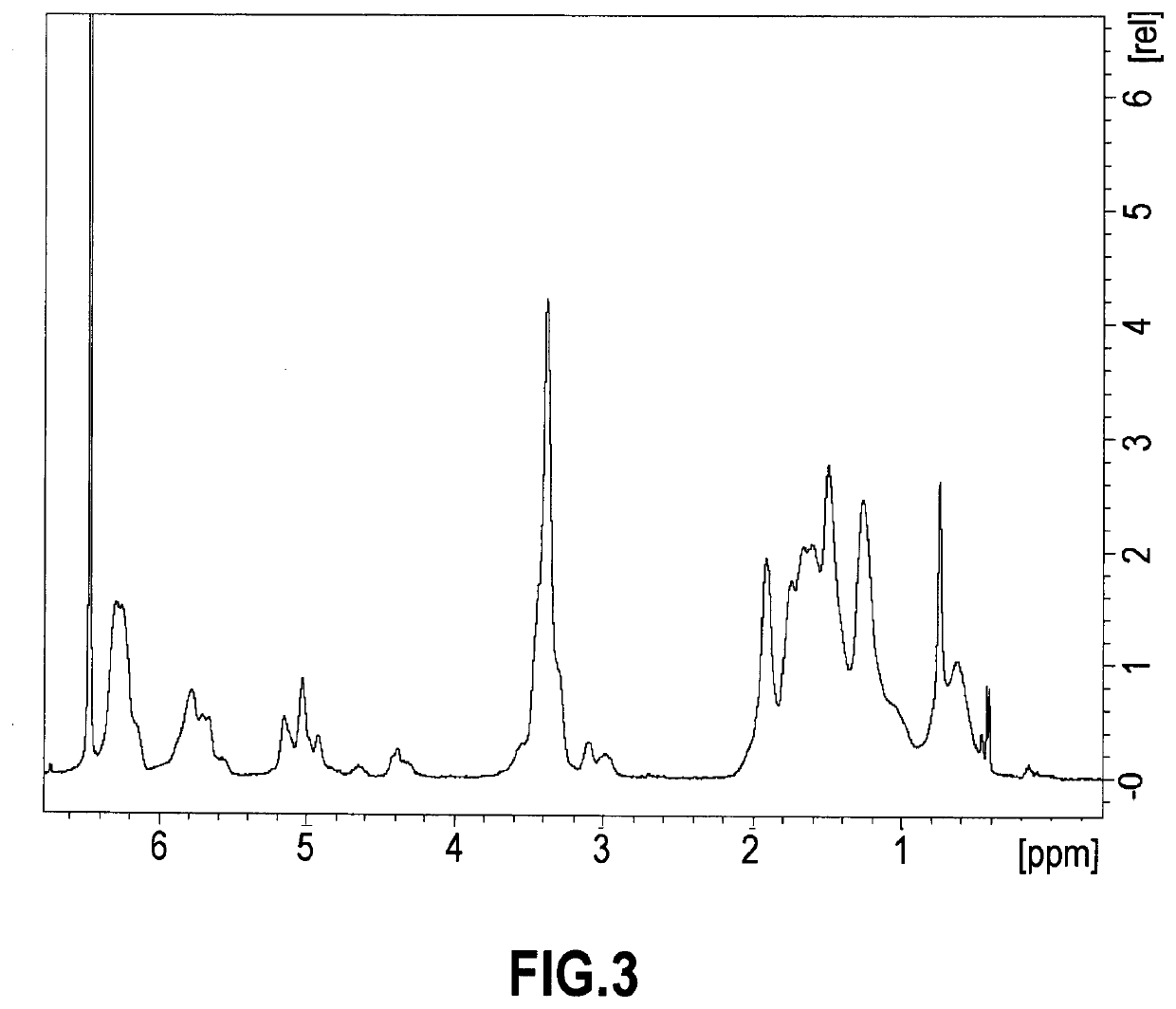Modified diene-containing (CO)polymer, method for preparing thereof and use as a flame retardant
a technology of modified diene and polymer, which is applied in the direction of fireproof paints, etc., can solve the problems of loss of flame retardant properties, high toxicity and stability, and hbcd to bioaccumulation, and achieve the effect of lowering the thermal stability of the obtained modified diene-containing (co)polymer
- Summary
- Abstract
- Description
- Claims
- Application Information
AI Technical Summary
Benefits of technology
Problems solved by technology
Method used
Image
Examples
example 1
on of a Modified Styrene-Butadiene Copolymer that is Free of Tertiary and Allyl Bromides (According to the Invention)
[0182]Into a dark glass flask having a volume of 500 ml, a solution of a starting styrene-butadiene copolymer in dichloromethane (5 g of the copolymer per 50 g of dichloromethane) is added. Next, 15 g of butanol and a solution of tetraethylammonium bromide in dichloromethane (12.96 g of tetraethylammonium bromide per 143 g of dichloromethane) are added to the flask. Then a solution of bromine in dichloromethane (9.56 g of bromine per 9.56 g of dichloromethane) is dosed into the flask and the solution is stirred for 30 minutes at 35° C. Then the reaction mass is washed with three-fold volume excess of distilled water.
[0183]After that, the aqueous layer is drained, and an organic layer containing a partially brominated styrene-butadiene copolymer is loaded into the dark glass flask having a volume of 500 ml, equipped with a stirrer, and the stirring is started. Next, a ...
example 2
on of a Modified Styrene-Butadiene Copolymer Containing Allyl Bromides (Comparative)
[0188]In the Example the preparation of the modified styrene-butadiene copolymer with the combination of the partial halogenation with the modification step is carried out.
[0189]Into a dark glass flask having a volume of 500 ml, a solution of the starting styrene-butadiene copolymer in dichloromethane (5 g of the copolymer per 50 g of dichloromethane) is added. Next, 15 g of butanol, 2.5 g of water, and a solution of tetraethylammonium bromide in dichloromethane (12.96 g of tetraethylammonium bromide per 143 g of dichloromethane) are added to the flask. A solution of bromine in dichloromethane (9.56 g of bromine per 9.56 g of dichloromethane) is dosed into the flask and the solution is stirred for 30 minutes at 35° C. When the reaction is completed, a sodium hydroxide solution is added to the flask and the neutralization is carried out for 60 minutes. Then the reaction mass is washed with a three-fol...
example 3
on of a Modified Styrene-Butadiene Copolymer Containing Tertiary Bromides (Comparative)
[0193]In the Example the modified styrene-butadiene copolymer is obtained without the conduction of the preliminary partial halogenation.
[0194]Into a dark glass flask having a volume of 250 ml, a solution of the starting styrene-butadiene copolymer in dichloromethane (10 g of the rubber per 150 g of dichloromethane) is added. Next, 30 g of butanol, 7.6 g of water, are added to the flask, after which a solution of 17.74 g bromine in 20 ml dichloromethane is dosed into the flask. The modification reaction is carried out for 30-40 minutes. When the reaction is completed, a sodium hydroxide solution is added to the flask and the neutralization is carried out for 60 minutes. Then the reaction mass containing the modified styrene-butadiene copolymer is washed with a three-fold volume excess of distilled water.
[0195]Then the resulting modified styrene-butadiene copolymer is filtered followed by the preci...
PUM
| Property | Measurement | Unit |
|---|---|---|
| Temperature | aaaaa | aaaaa |
| Temperature | aaaaa | aaaaa |
| Temperature | aaaaa | aaaaa |
Abstract
Description
Claims
Application Information
 Login to View More
Login to View More - R&D
- Intellectual Property
- Life Sciences
- Materials
- Tech Scout
- Unparalleled Data Quality
- Higher Quality Content
- 60% Fewer Hallucinations
Browse by: Latest US Patents, China's latest patents, Technical Efficacy Thesaurus, Application Domain, Technology Topic, Popular Technical Reports.
© 2025 PatSnap. All rights reserved.Legal|Privacy policy|Modern Slavery Act Transparency Statement|Sitemap|About US| Contact US: help@patsnap.com



